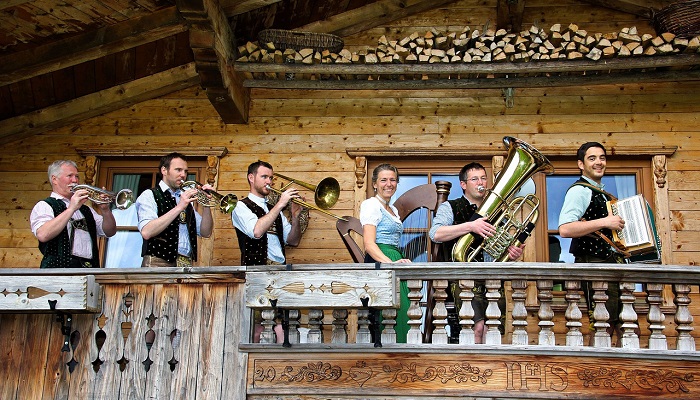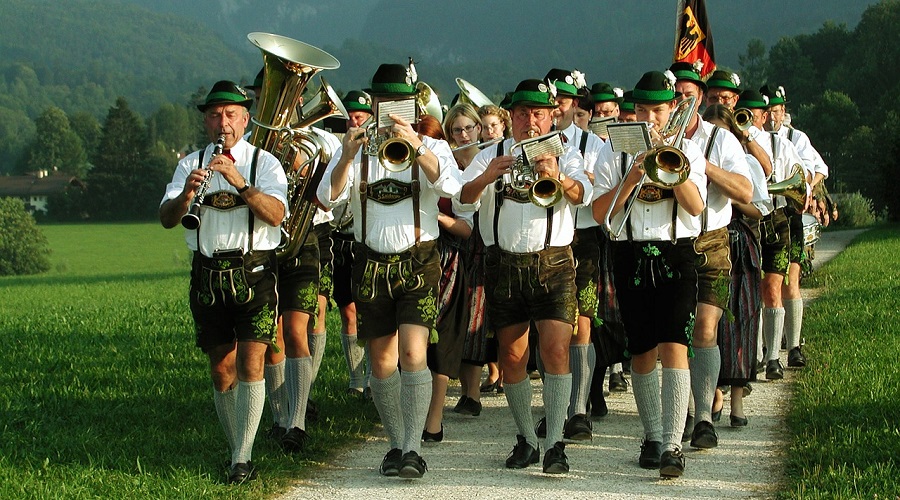“I mean, the genuine root of culture is folk music.” – John Lydon.
Since the dawn of time, humans have used music for communication. Prehistoric humans used their voices and instruments they carved from animal bones to create melodies to show emotions, send warnings, and even pray to their deities.
As humanity’s consciousness evolved, people began to use their music and songs to tell stories. Traditional folk music is a diverse concept that differs from one location to another and across different periods.
So, what are the types of folk music? In this article, you’ll learn about the different varieties of folk music and their unique traits. Keep on reading to learn more about them.
What is Folk Music?
Folk music is defined in several ways, but the most common definition refers to traditional music that was transmitted orally without knowing the composers.
It also refers to music that was performed by custom over a long period, transmitted down from one generation to another.
Folk music can be found in different parts of the world, with various traits that differ according to the geographical region. Different types of folk music share the following characteristics.
- People performed these songs by custom and passed them over several generations.
- It was originally transmitted through an oral tradition, as people learned songs by memorizing them.
- The music is related to the national culture or the culture of a particular community or region.
- Minority groups use folk music to emphasize their differences from the mainstream, especially in the case of immigrants.
- This type of music focuses on historical or personal events. Some songs are related to specific holidays and festivals.
- Some folk songs show the fusion of cultures through lyrics or music genres.
Types of Folk Music

Types of folk music aren’t exclusive to Western music genres. After the creation of instrumental music, people usually added lyrics to create ballads that usually tell a story.
Across the world, folk music can be categorized into several types that usually fall within the following categories.
Event or Location-Related Folk Music
These are ballads that talk about a specific location or point in time. Event folk music has a narrative style and can be sad or happy, depending on the event’s nature.
In the Bible, The Song of Deborah is one of the oldest examples of this genre, as it narrates the defeat of Canaanite by the tribes of Israel.
“Kuando el rey Nimrod ” is a Jewish folk song and is sung in Judaeo-Spanish language to the story of the birth of Abraham.
“Fum, Fum, Fum” is a Catalan Christmas song that was later translated into English.
“John Brown’s Body” was composed during the American Civil War. The original composition was a collective effort by several Union soldiers.
“Hold the Fort” is another American Civil War song that focused on nationalism to encourage soldiers by telling the story of victory.
Love Folk Music
Love is one of the most famous themes in folk music. Love songs were easy to relate to, whether they talk about lost love or a new one.
Throughout history, some of the old love folk songs were used in a different context. This was clear in the Middle East, where love songs were later used to refer to the love someone has for their tribe or country.
“Lass of Glenshee” is a Scottish love song that tells the story of a king who fell in love with a lady he saw while riding his horse. He falls in love and proposes to her, but after she refuses, she accepts his love.
“Died for Love” is a traditional British folk song that tells the story of a young woman who looks for the sailor she fell in love with. She finds out that he drowned and, in some versions of the song, takes her own life.
Although some songs focused on the love theme, they were usually used as marching songs for the troops. The German “Schwarzbraun ist die Haselnuss” is an example of these songs.
Murder Folk Music

These songs are intriguing because the arrangement of the music and lyrics can either encourage the audience to feel sorry about or encourage the murderer based on the character building in the song.
Murder ballads usually have Germanic origins and sometimes tell the story of the murder receiving justice. “The Knoxville Girl” is an Appalachian murder folk music composition, which has roots in the Irish “The Wexford Girl.”
“The Cruel Mother” is a British folk song that talks about a woman who murders her own son. She then sees a child, who tells her that she is bound for hell. The song has several variations in Ireland and the United States.
Hero and Villain Folk Music
Hero and villain folk themes are common in all ancient cultures, as the elders used them to teach younger generations about bravery and nationalism.
Klephtic songs were developed in mainland Greece around the 15th century and told the story of a single klepht or their lives as a group, celebrating their fight against the Ottoman Empire.
The Pandavani is a collective work of folk narration of tales from the Indian epic Mahabharata. When performed, the performers add some lyrics to reflect on current events. They also usually interact with the audience by asking questions.
Abu Zayd Ibn Rizq Al-Hilali is another hero who is often celebrated in contemporary Egyptian folk music. The Sirat Bani Hilal is an Arab epic oral poem and music composition built around some historical events that took place in the 11th century.
The Hilali performers come from specific families and sing their songs while interacting with the audience. A single performance can last between 50 and 100 hours, and the lyrics are accompanied by string and wind instruments.
Trouble Folk Music

These songs focus on the hardships one faces because of the circumstances. Because this theme is widely relatable, hard trouble folk songs can be found in almost every culture.
These ballads and songs adopt a narrative style, telling the story of the person the song is about, with special emphasis on character progression.
“Long Hot Summer Days” is a song that was sung by the African slaves to talk about the long days they spent in forced labor. The song was later transferred from the fields to prisons to express the pain of being locked away.
African-American women’s work songs were shared to spread resistance. Slaves who came from different origins used folk songs to maintain their oral traditions. The songs were usually about the themes of loss and suffering.
Work Folk Music
Work folk songs were used by workers throughout history to pass the time and boost moralities. The songs were usually about their pride in doing the job. A call and response technique is usually followed.
Work songs started in old communities, where songs were used to collect members of the group for a collective task like herding sheep and hunting animals.
The Mbuti people of The Congo used work songs and incorporated whistles to help hunters locate each other.
“Long John” is a song that was sung by African Americans to explain how the land was cleared for cultivation. The men spent long hours walking and working in the sun, and the song helped them pass the time.
“Peg and Awl” is a work song that dates back to the industrial revolution in England. The song is about making shoes but focuses on the invention of a machine that makes this job easier.
Sea shanties were used by sailors while working on ships. “Cheer’ly Man” is an example of these songs.
Paranormal and Legendary Folk Music
These songs talk about ghosts, demons, gods, the devil, faes, and other mythical creatures and beings that hold a particular position in a specific culture. These songs have a strong narrative style to engage the audience.
“The Unquiet Grave” is an English folk song about a man who weeps at the grave of his loved one, begging for a kiss. She refuses and tells him that they would both perish and encourages him to enjoy his life.
“The Wife of Usher’s Well” is a British folk song that is also popular in the United States. It tells the story of a mother who is visited by the ghosts of her 3 dead children.
“The Weeping Woman” or La Llorona is a Mexican folk song that tells the story of a man and the ghost of his deceased wife who won’t let him go.
Children Folk Music

These songs talk about traditions, morals or tell funny stories. They adopt an expressive narrative style or use funny words that are easy to memorize. In modern times, some of these songs are used for educational purposes.
“Akka bakka bonka rakka” is a Norwegian folk music composition that involves a lot of nonsense words but is mainly used for counting to determine roles while playing tag or hide and seek.
Another example of counting rhymes is “Eeny, meeny, miny, moe” which can be found in several forms.
“Au clair de la lune” is a French song with a simple melody that is usually taught when learning to play a musical instrument. A phonautograph-recorded version survived, which is the oldest recognizable recording of the human voice.
“Warabe uta” is a famous Japanese children’s folk song, which is usually used during games.







